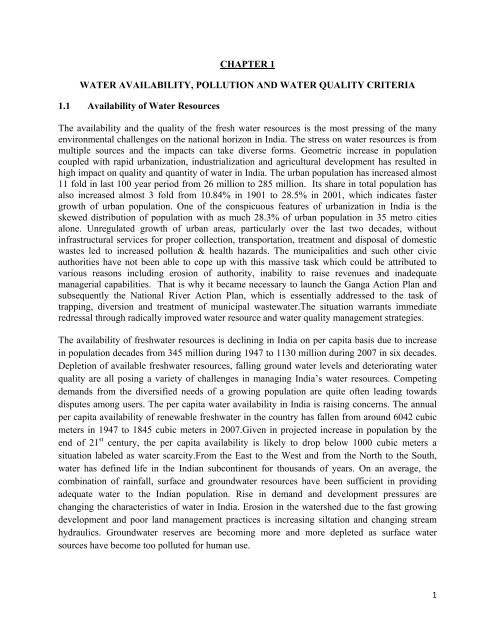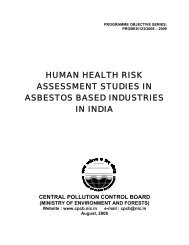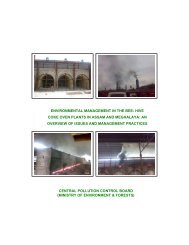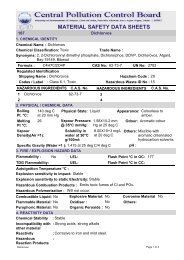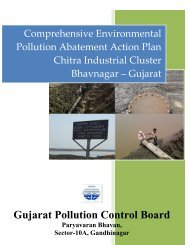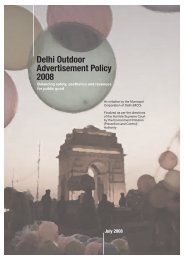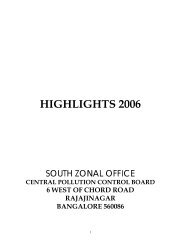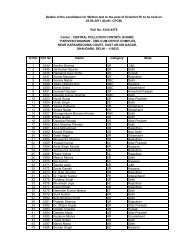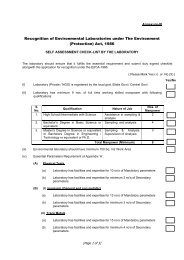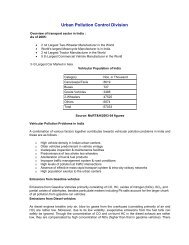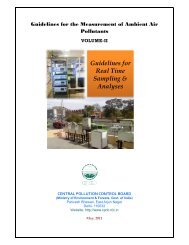Q ST QUA TAT ALIT US O TY IN OF W N IN WA NDIA ATER A- 2 R ...
Q ST QUA TAT ALIT US O TY IN OF W N IN WA NDIA ATER A- 2 R ...
Q ST QUA TAT ALIT US O TY IN OF W N IN WA NDIA ATER A- 2 R ...
Create successful ePaper yourself
Turn your PDF publications into a flip-book with our unique Google optimized e-Paper software.
CHAPTER 1<strong>WA</strong>TER AVAILABILI<strong>TY</strong>, POLLUTION AND <strong>WA</strong>TER <strong>QUA</strong>LI<strong>TY</strong> CRITERIA1.1 Availability of Water ResourcesThe availability and the quality of the fresh water resources is the most pressing of the manyenvironmental challenges on the national horizon in India. The stress on water resources is frommultiple sources and the impacts can take diverse forms. Geometric increase in populationcoupled with rapid urbanization, industrialization and agricultural development has resulted inhigh impact on quality and quantity of water in India. The urban population has increased almost11 fold in last 100 year period from 26 million to 285 million. Its share in total population hasalso increased almost 3 fold from 10.84% in 1901 to 28.5% in 2001, which indicates fastergrowth of urban population. One of the conspicuous features of urbanization in India is theskewed distribution of population with as much 28.3% of urban population in 35 metro citiesalone. Unregulated growth of urban areas, particularly over the last two decades, withoutinfrastructural services for proper collection, transportation, treatment and disposal of domesticwastes led to increased pollution & health hazards. The municipalities and such other civicauthorities have not been able to cope up with this massive task which could be attributed tovarious reasons including erosion of authority, inability to raise revenues and inadequatemanagerial capabilities. That is why it became necessary to launch the Ganga Action Plan andsubsequently the National River Action Plan, which is essentially addressed to the task oftrapping, diversion and treatment of municipal wastewater.The situation warrants immediateredressal through radically improved water resource and water quality management strategies.The availability of freshwater resources is declining in India on per capita basis due to increasein population decades from 345 million during 1947 to 1130 million during 2007 in six decades.Depletion of available freshwater resources, falling ground water levels and deteriorating waterquality are all posing a variety of challenges in managing India’s water resources. Competingdemands from the diversified needs of a growing population are quite often leading towardsdisputes among users. The per capita water availability in India is raising concerns. The annualper capita availability of renewable freshwater in the country has fallen from around 6042 cubicmeters in 1947 to 1845 cubic meters in 2007.Given in projected increase in population by theend of 21 st century, the per capita availability is likely to drop below 1000 cubic meters asituation labeled as water scarcity.From the East to the West and from the North to the South,water has defined life in the Indian subcontinent for thousands of years. On an average, thecombination of rainfall, surface and groundwater resources have been sufficient in providingadequate water to the Indian population. Rise in demand and development pressures arechanging the characteristics of water in India. Erosion in the watershed due to the fast growingdevelopment and poor land management practices is increasing siltation and changing streamhydraulics. Groundwater reserves are becoming more and more depleted as surface watersources have become too polluted for human use.1


